iPhone 12 vs. iPhone SE: Which is the right iPhone for you?
Should you buy the iPhone 12 or get the cheaper iPhone SE instead? Here’s what you need to know
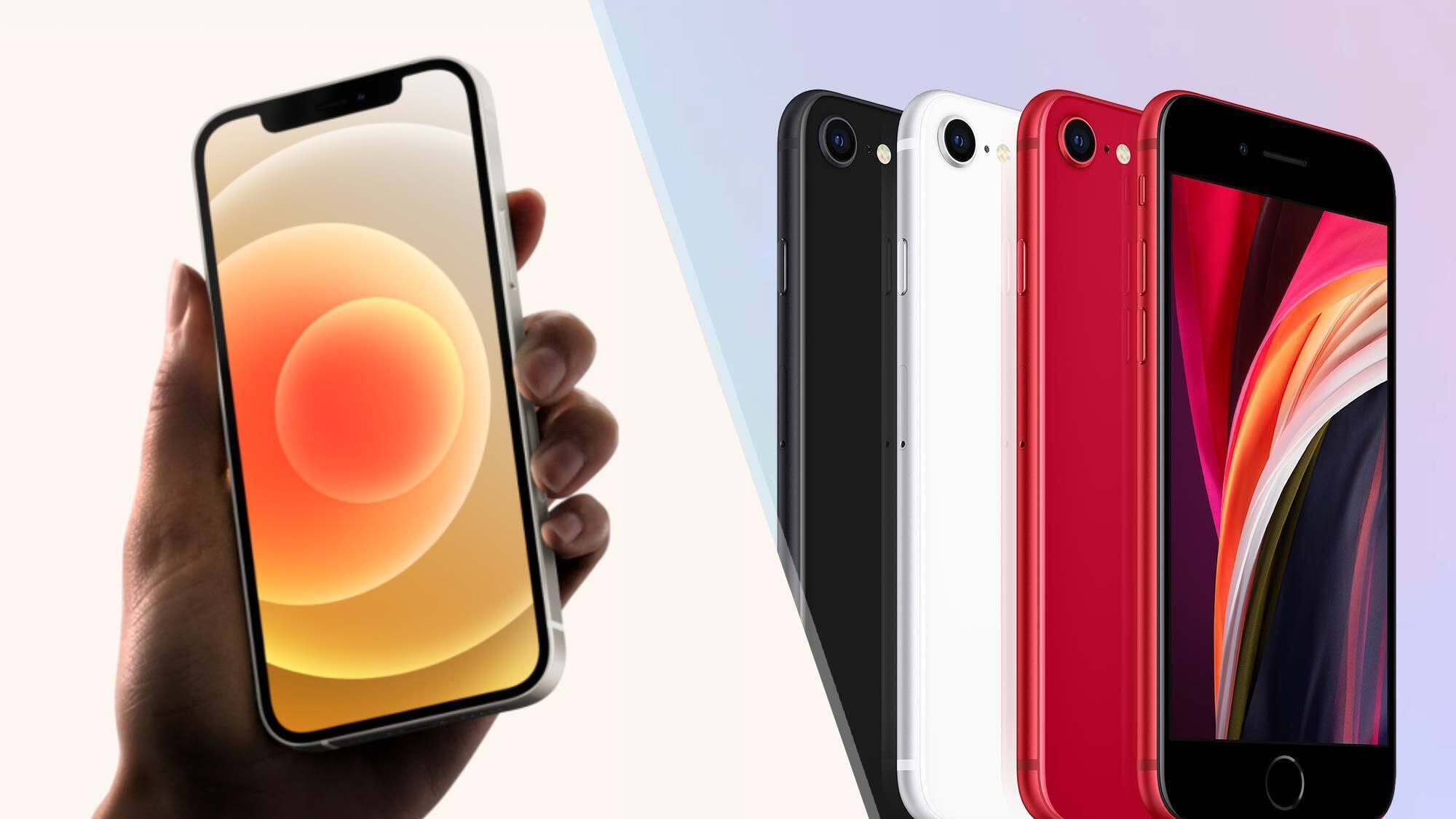
Update: The iPhone 12 now has a reduced price of $699 and the iPhone 12 mini is $599, making them a better deal.
An iPhone SE vs iPhone 12 comparison will help you decide which iPhone to buy if you're on the fence between going the budget route or splurging for a flagship.
As you'll see in our iPhone SE 2020 review, Apple's $399 phone is no slouch. You get a fast A13 Bionic processor and good cameras in a compact design. But our iPhone 12 mini review and iPhone 12 review show how much more you can get if you're willing to spend more.
You can also consider getting the refurbished version of the iPhone 12 or the iPhone 12 Pro models instead, since Apple has just started offering them at up to $180 cheaper compared to the new models.
- Best iPhones you can buy right now
- The best iOS apps for your phone
- iPhone 12 mini vs. iPhone 12 vs. iPhone 12 Pro: Compare all four models
Starting now at $599, the iPhone 12 series delivers more versatile cameras, including an ultra-wide lens, larger displays, even more speed and 5G connectivity. Plus, the designs are more durable, as the screens are protected by CeramicShield.
But are all those changes worth the extra money you'd have to pay over the affordable iPhone SE? Here's a comparison of the iPhone 12 vs. iPhone SE, based on our testing and comparisons.
iPhone 12 vs. iPhone SE: The Specs
| Row 0 - Cell 0 | iPhone SE 2020 | iPhone 12 mini/iPhone 12 |
| Starting price | $399 | $599/$699 |
| Screen Size | 4.7 inch LCD | 5.4 inch OLED/6.1 inch OLED |
| CPU | A13 Bionic | A14 |
| RAM | 3GB | 4GB |
| Storage | 64GB, 128GB, 256GB | 64GB, 128GB, 256GB |
| Rear camera | 12MP | Dual rear cameras |
| Front camera | 7MP | TrueDepth camera |
| 5G? | No | Sub-6GHz, mmWave |
iPhone 12 vs. iPhone SE: Price and availability
Even after the iPhone 12's release, the iPhone SE remains the undisputed champ in one key area — it costs less than any iPhone in Apple's current lineup. At $399, the iPhone SE costs $200 less than the least expensive iPhone 12 model — the $599 iPhone 12 mini. The regular iPhone 12 is now $699.
It's not just a matter of offering a low price. As we'll see throughout this iPhone 12 vs. iPhone SE face-off, Apple made one of the best cheap phones you can currently buy. You can reduce the cost even further by trading in your current iPhone when you buy from Apple and getting up to $120 off the cost of an iPhone SE. The best iPhone SE deals might reduce your cost even further.
As for the iPhone 12 Pro and iPhone 12 Pro Max, Apple stuck with the same prices for last year's Pro models. You can pick up an iPhone 12 Pro for $999, while the iPhone 12 Pro Max costs $1,099. Apple will take off up to $340 by trading in an iPhone XS Max when you buy one of the Pro models. Lower trade-in values are available on additional iPhones.
iPhone 12 vs. iPhone SE: Design and display
The iPhone SE has a cutting-edge look — if you're reading this prior to 2017. That was the last time Apple introduced a new phone without a notched display in the form of the iPhone 8. In fact, the iPhone SE essentially adopts the iPhone 8's design, right down to the 4.7-inch screen surrounded by chunky bezels on the top and bottom of the screen.
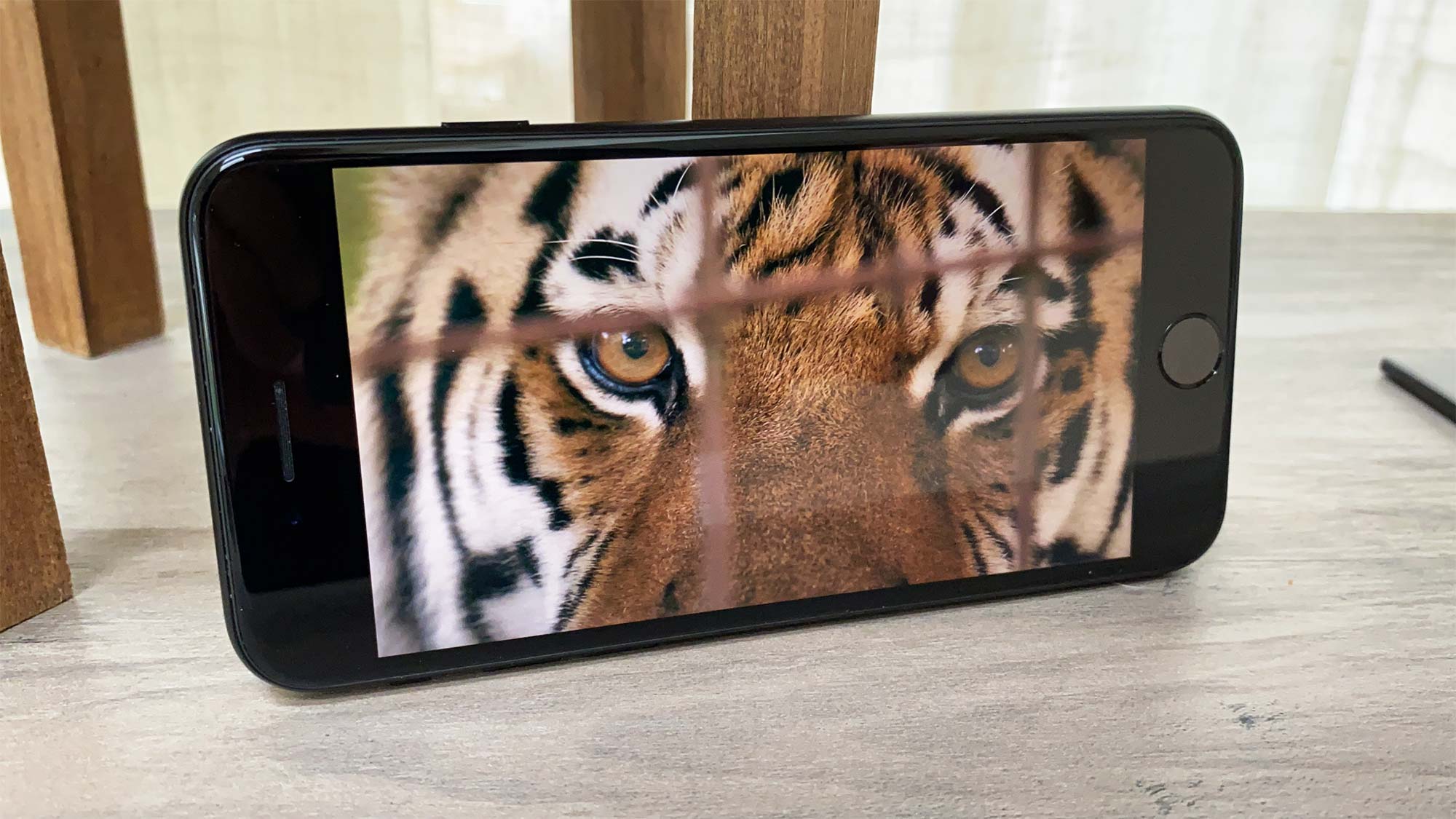
The iPhone 12 lineup draws on iPhones past in one significant way — Apple returned to the squared off edges last seen on the iPhone 5, ditching the rounded edges of more recent models. Otherwise, the new phones look a lot like the what you got with the iPhone 11, right down to the notch that dips into the top part of the display. (Hey, on the bright side — no thick iPhone SE-style bezels.)
The big difference between the iPhone SE and the iPhone 12 comes down to screen sizes, though if you're a fan of small phones, that seemingly works in the SE's favor. The iPhone SE sports a 4.7-inch screen in a very compact design. The iPhone 12, in contrast, is going to come in a range of sizes, from a 5.4-inch iPhone 12 mini all the way up to a 6.7-inch iPhone 12 Pro Max.
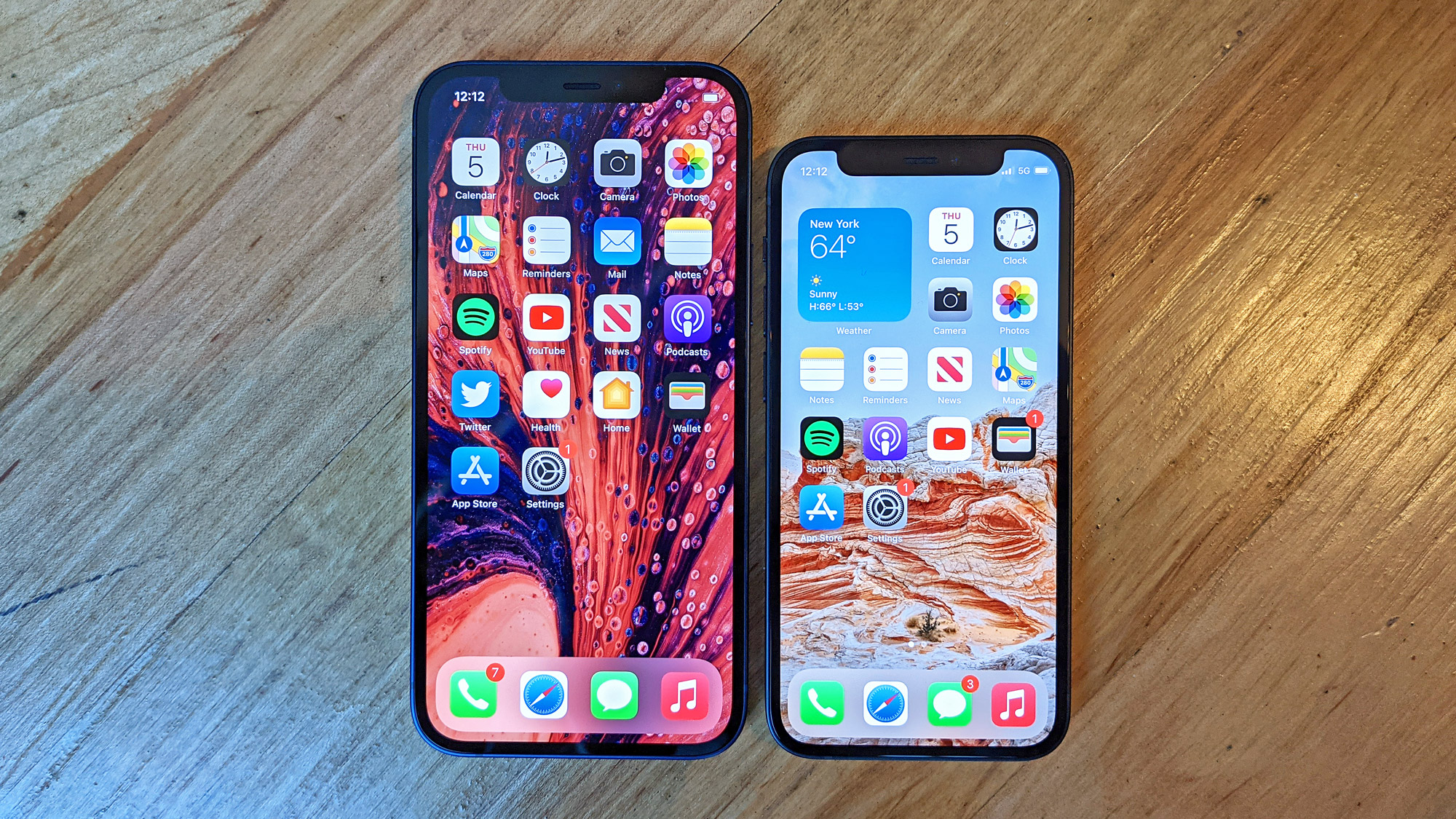
The 5.4-inch iPhone 12 mini is especially appealing to small phone fans, since it's actually smaller than the iPhone SE, even though that latter phone has the smaller screen. The iPhone 12 mini measures 5.18 x 2.53 x 0.29 inches, which is shorter and not as wide as the 5.18 x 2.53 x 0.29-inch iPhone SE.
None of the iPhone 12 models feature the fast refresh rate that had been rumored prior to their launch, but they do enjoy at least one edge over the iPhone SE — they're all using OLED panels, even the cheaper mini and iPhone 12 models.
That translates to slightly more colors on the iPhone 12 screens. The iPhone 12 mini and iPhone 12 Pro capture 117.8% and 115.6% of the sRGB color spectrum, which is slightly more than the SE's 111.2%. The iPhone SE's Delta-E rating of 0.2 is more closer to accurate than all of the iPhone 12 models, save for the iPhone 12 Pro Max, which tallied a nearly perfect 0.07. (The closer to zero, the more accurate the score.)
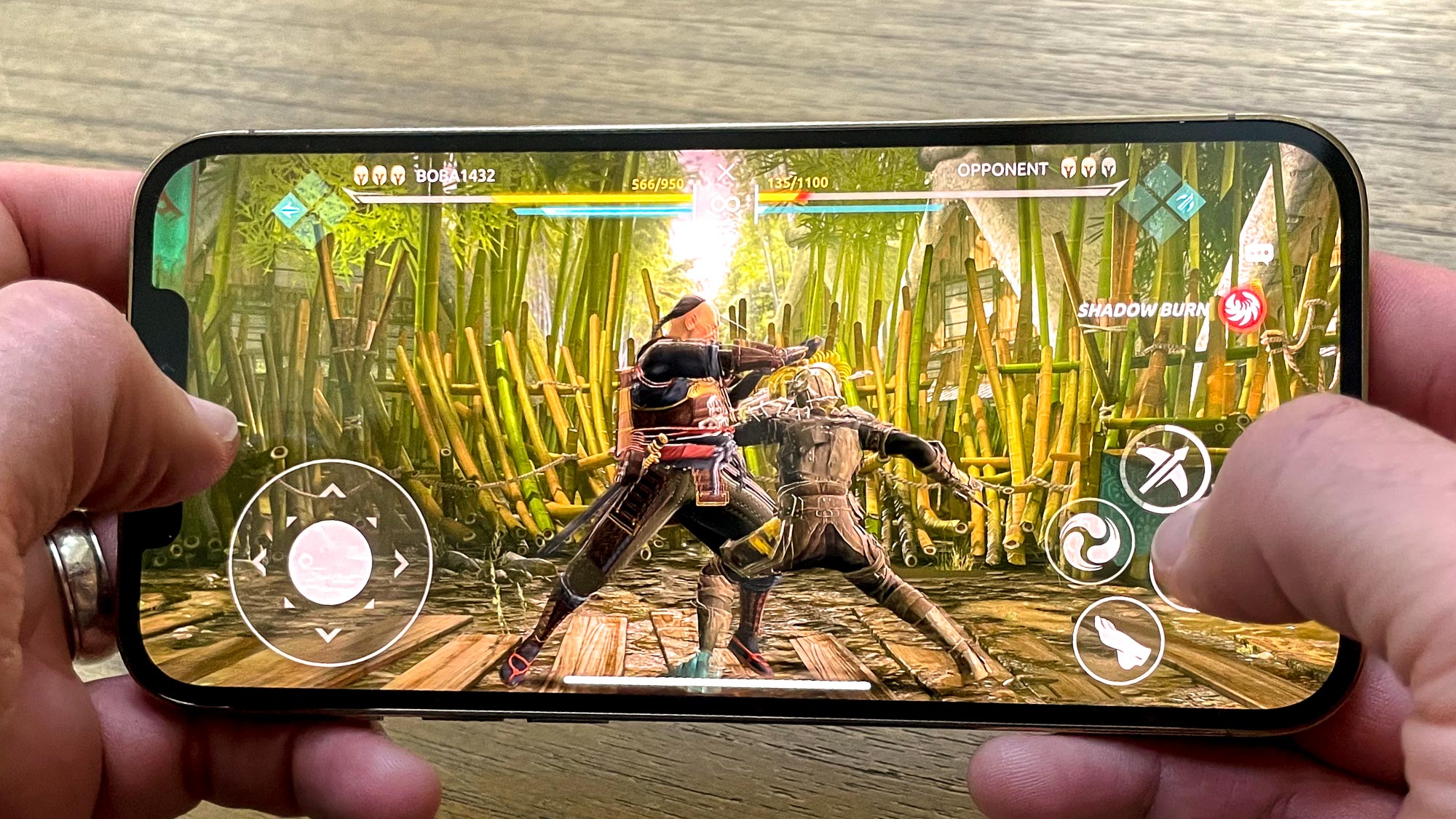
Avoid the iPhone 12 mini if you need the brightest screen, as its 505-nit reading was the lowest we measured with a light reader among all these models. The iPhone SE's LCD panel measured 653 nits, which also topped the iPhone 12 (569 nits) and iPhone 12 Pro Max (654 nits). The iPhone 12 Pro is the brightness champ at 742 nits.
iPhone 12 vs. iPhone SE: Cameras
Camera differences between the iPhone SE and iPhone 12 models break down into a story of rear lenses. The iPhone SE has just one of them. The iPhone 12 and 12 mini feature two cameras, while the iPhone 12 Pro and Pro Max add more optics in the form of a telephoto lens and LiDAR sensor.
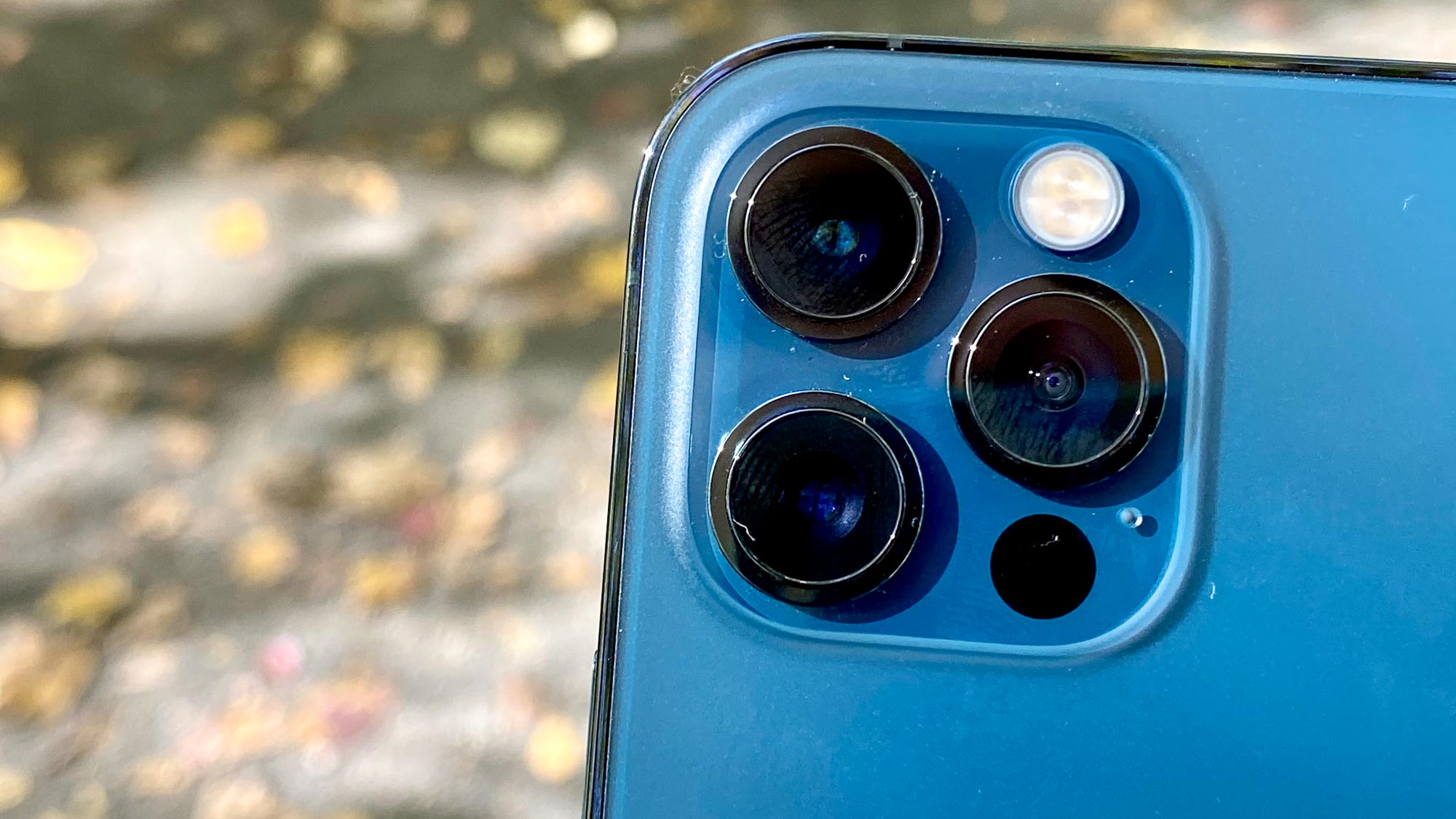
Specifically, the iPhone 12 mini and the iPhone 12 feature the same setup — a 12MP main camera and a 12MP ultrawide angle lens. The main sensor has a wider f/1.6 aperture to let in more light, and there's a 7-element design also aimed at improving low-light performance.
You'll get those features on the iPhone 12 Pro models, though the iPhone 12 Pro Max ups the ante with a larger main sensor to let in even more light. In addition to the wide and ultrawide cameras, the Pro models get that telephoto lens we mentioned. There are different apertures and focal lengths on the telephoto lens for the two phones — you can get the details in our iPhone 12 Pro vs. iPhone 12 Pro Max comparison — but the bottom line is that Max enjoys more of a zoom than the standard iPhone 12 Pro.
The iPhone 12 Pro models include a LiDAR scanner that helps with portrait shots, such as portrait shots in Night Mode.
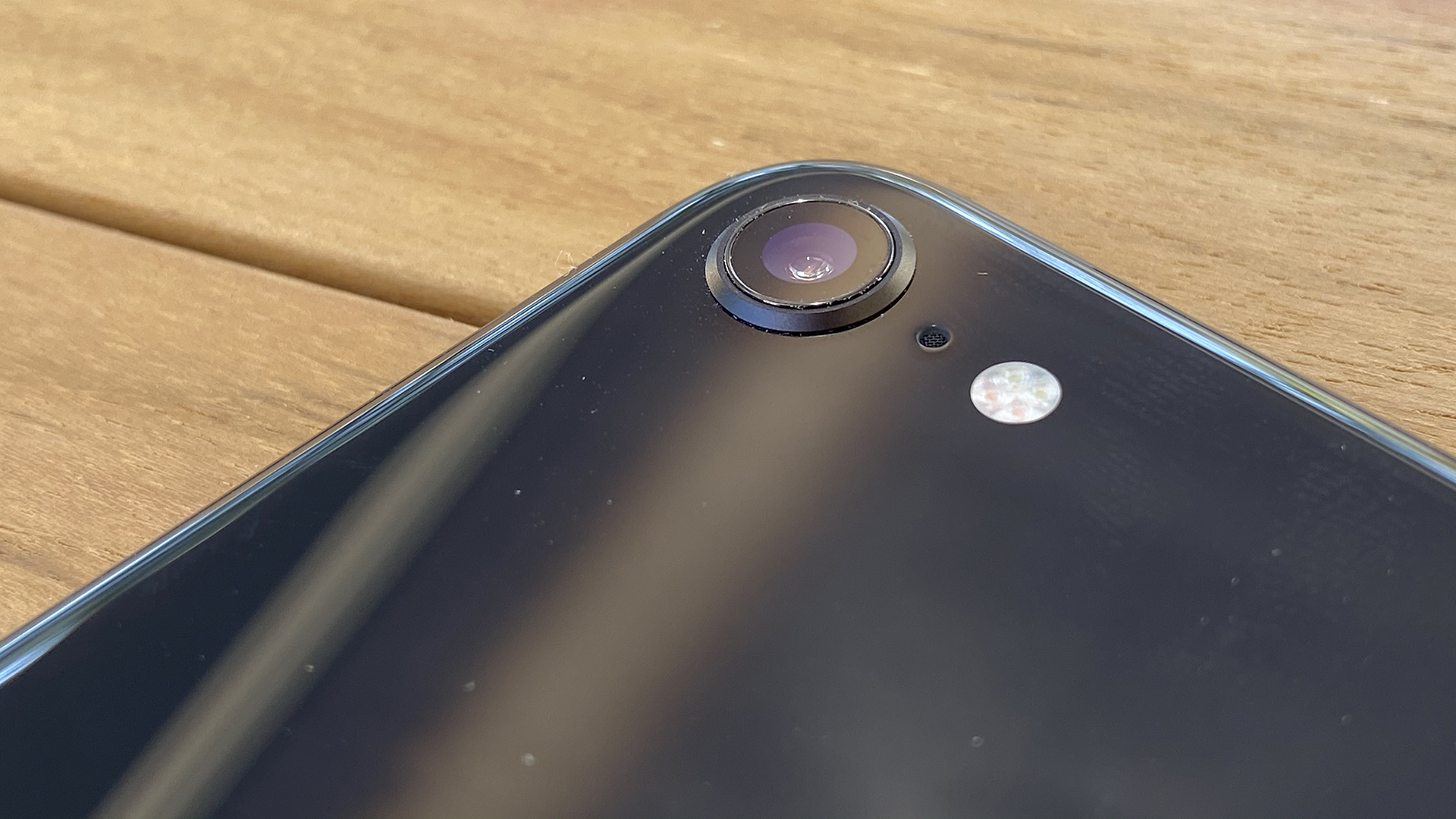
The iPhone SE keeps it simple with a single 12MP camera on its back, and while that certainly limits its flexibility when it comes to zooming in and pulling back to capture different details, all is not lost. Because the iPhone SE features the same A13 Bionic processor as the iPhone 11 lineup, it benefits from a neural processor on that chipset. That enables the iPhone SE to take portrait shots and bring out highlights in faces using Smart HDR.
There is one area where the iPhone SE lags Apple's current iPhones. There's no support for Night mode on the iPhone SE, so look elsewhere if you want a phone that can take crisp photos when the lights are low.
iPhone 12 vs. iPhone SE: Performance
We mentioned the iPhone SE uses the A13 Bionic chipset, a processor that can outperform top-of-the-line Android devices. That means you've got flagship power in a sub-$400 device — one of the iPhone SE's main selling points.
The iPhone 12 outdoes that, though, with the A14 Bionic, a 5-nanometer processor that's more powerful and power efficient than the 7nm A13.
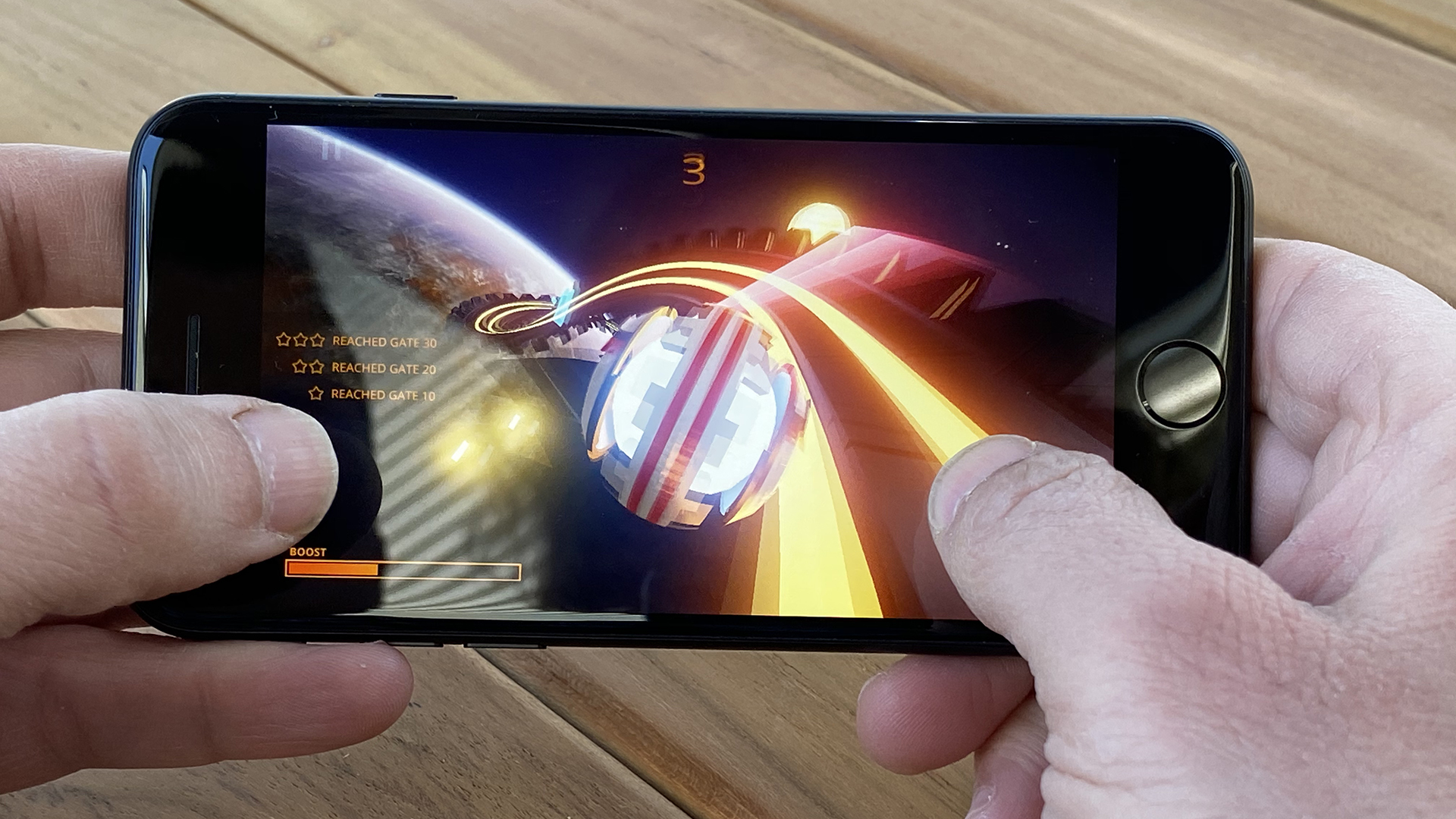
How much more powerful? Our iPhone 12 benchmarks tell the story, but to sum up, the iPhone 12 and iPhone 12 Pro posted multicore scores of 3,859 and 3,880 in Geekbench 5. The iPhone SE scored 3,226 — good enough to beat many Android flagships, but far behind the A14-powered phones.
In our real-word test in which we time how long it takes for phones to transcode a 4K video to 1080p using Adobe Premiere Rush, the iPhone SE pulls off the task in 43 seconds. The iPhone 12 sets the new pace at 26 seconds.
All four iPhone 12 models feature 5G support — something Apple skipped on the iPhone SE. So if being able to connect to faster cellular networks is a key concern of yours, the iPhone SE is a non-starter.
iPhone 12 vs. iPhone SE: Battery life
The iPhone SE doesn't deliver much on the battery front. Apple doesn't disclose the size of its phone batteries, but iPhone SE teardowns point to an 1,821 mAh power pack inside the device. That doesn't translate to a very good battery life in our testing, which involves continuous web surfing over LTE until a fully charged phone runs out of power. The iPhone SE lasted just 9 hours and 18 minutes, which is below the average time of around 10 hours for a typical smartphone.
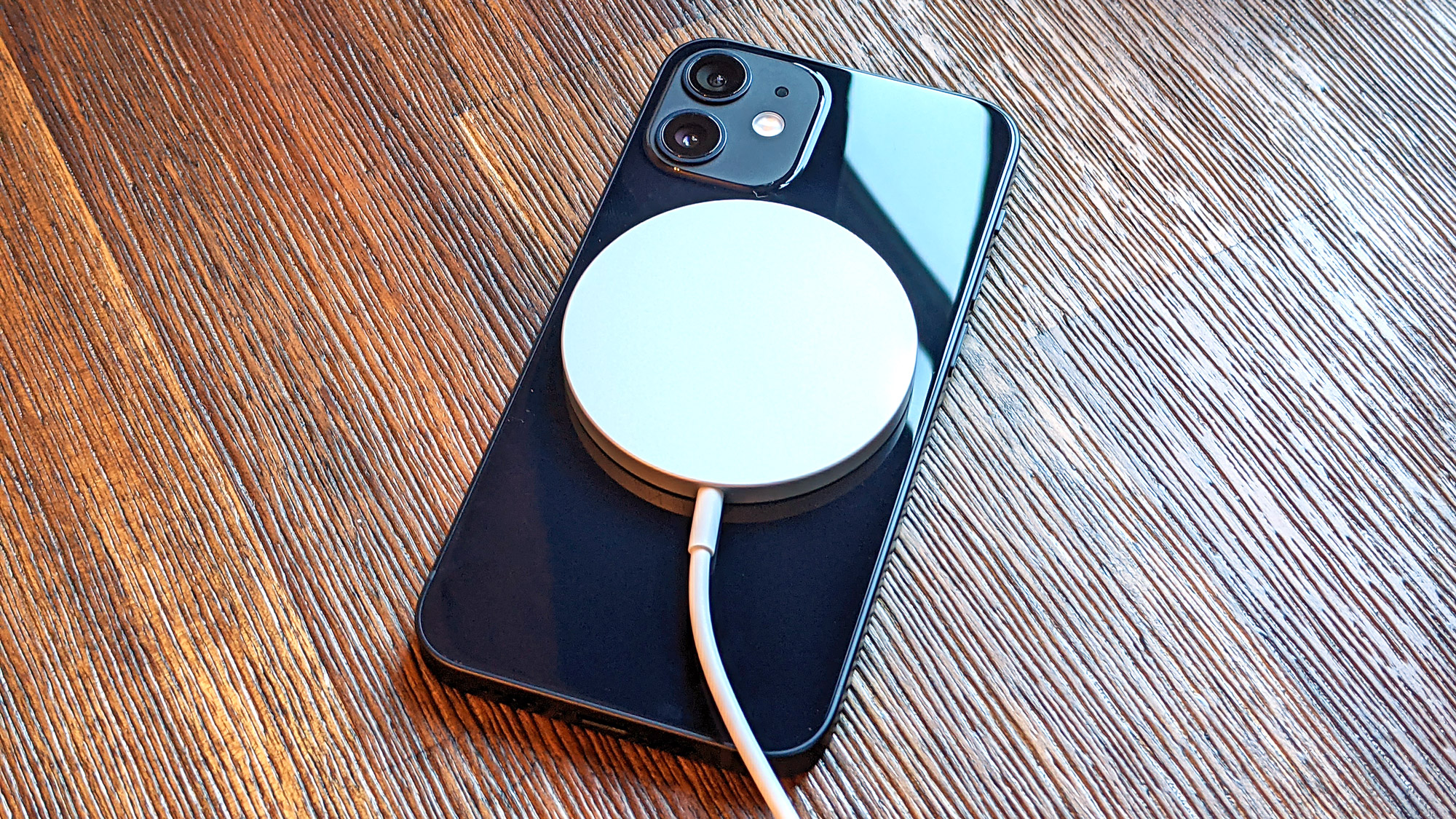
The iPhone 12 series hasn't impressed in our battery test, either, with the exception of the iPhone 12 Pro Max. Apple's largest phone held out for an equally super-sized time of 10 hours and 53 minutes, falling just short of landing on our best phone battery life list. The iPhone 12 Pro made it past 9 hours, but the iPhone 12 and iPhone 12 mini couldn't beat the iPhone SE's result.
The iPhone 12 series holds one advantage over the iPhone SE when it comes to charging. While all of these phones can charge wirelessly, only the new iPhone 12 models contain the magnets that work with Apple's new MagSafe accessories. The magnets snap any compatible charging pad into place to ensure that you're getting the strongest charge.
iPhone 12 vs. iPhone SE: Software and special features
Like the TrueDepth camera-equipped iPhones before them, the iPhone 12 models support FaceID for unlocking your device and confirming mobile payments. The iPhone 12 Pro and its LiDAR sensor should be able to support more capable AR apps than the standard iPhone 12, let alone the iPhone SE.
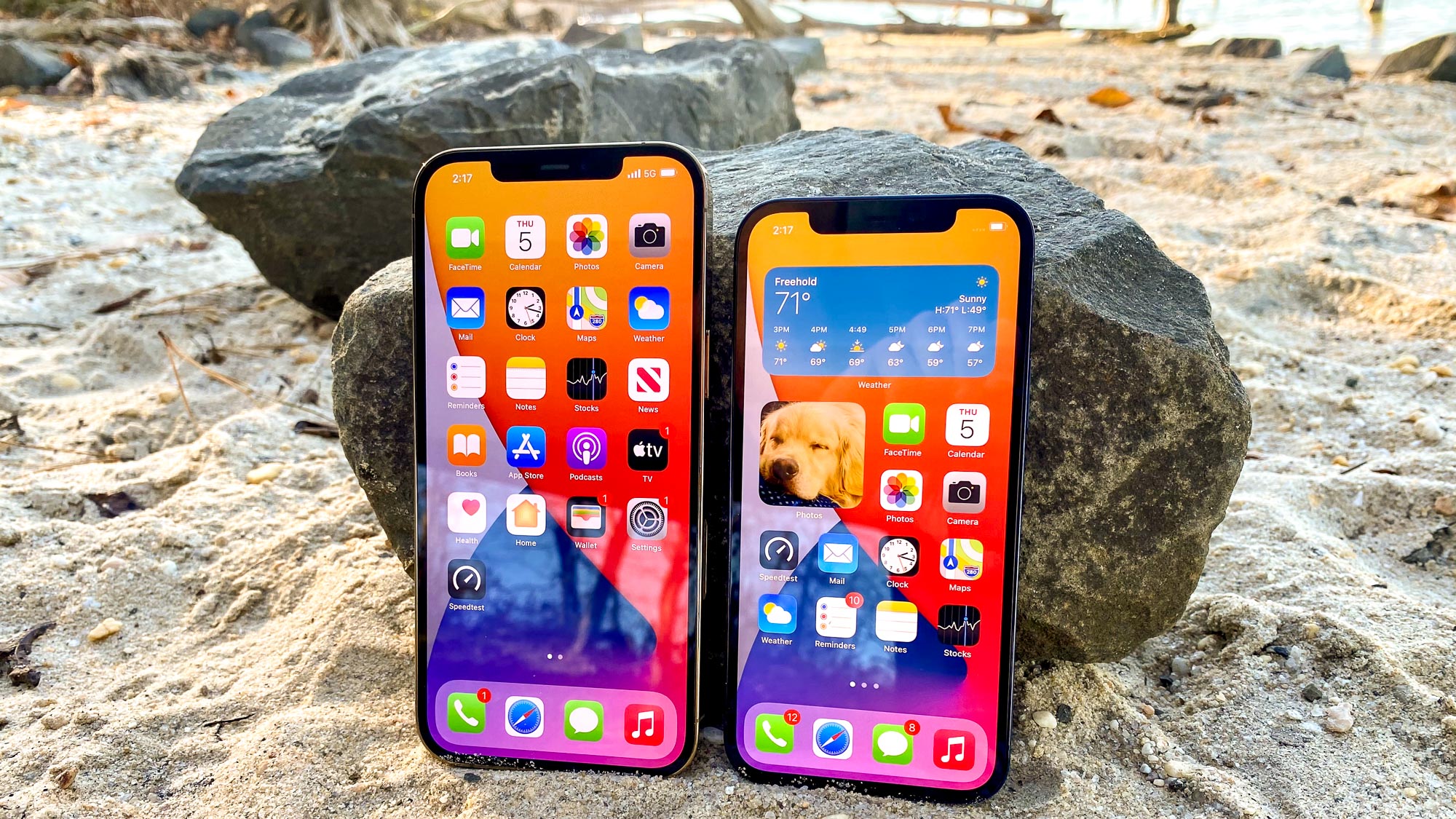
But the iPhone SE will match many of the software capabilities of Apple's latest iPhones, thanks to Apple's policy on iOS support. Like those models, the iPhone SE can run iOS 14, taking advantage of new features like widgets on the home screen and improvements to Maps and Messages, among other enhancements.
iPhone 12 vs. iPhone SE: Verdict
The iPhone 12 lineup introduced four impressive phones to Apple's offerings. And as good as the iPhone SE is, you'd have to acknowledge that the iPhone 12 models are superior in nearly every way, from design to performance to cameras. Only in the subject of battery life does the iPhone SE hold its own, and that's really only with the iPhone 12 mini and iPhone 12.
The iPhone 12 mini, in particular, poses an attractive option for iPhone SE fans drawn to the latter phone because it's so compact. The mini is the best small phone we've seen, and if you're willing to pay the $300 premium over the iPhone SE, it's the better option.
But price is a big sticking point, especially these days. Getting an iPhone for less than $400 is a pretty good bargain, and with its A13 processor and solid camera, you really aren't making huge trade-offs to get that lower price with the iPhone SE. The iPhone 12 models are the phones to get if you want the absolute best features, but the iPhone SE remains an intriguing alternative, especially for shoppers who want to save on their next smartphone purchase.
Sign up to get the BEST of Tom's Guide direct to your inbox.
Get instant access to breaking news, the hottest reviews, great deals and helpful tips.
Philip Michaels is a Managing Editor at Tom's Guide. He's been covering personal technology since 1999 and was in the building when Steve Jobs showed off the iPhone for the first time. He's been evaluating smartphones since that first iPhone debuted in 2007, and he's been following phone carriers and smartphone plans since 2015. He has strong opinions about Apple, the Oakland Athletics, old movies and proper butchery techniques. Follow him at @PhilipMichaels.

